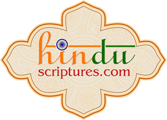Mizoram is derived from the word Mi (people) Zo(hill) Ram (land). Thus Mizoram is a land of hill people. Mizoram was earlier part of the State of Assam until 1972, which later became a Union Territory. Mizoram became a State in 1987. Mizoram has the highest concentration of tribal people in India. Kut means festival. Thus all the names of the festivals will have the word Kut.
Some of the festivals celebrated are:
Anthurium Festival: This festival is organised by the department of tourism in collaboration with the Horticulture department. The festival is organised with the objective of promoting tourism and cultivation and marketing of some of the exotic flowers grown in the state. It is held every September at Tourist Resort Reiek for three days during which the States’ culture, art, handloom, dance, theatre, folk songs, authentic cuisines are showcased. The festival is held at the Reiek Mountain which is situated at a height of 1584 meters above sea level. Games such as archery, rifle shooting, angling etc are also held during the festival.

Mim Kut: Mim Kut is a festival observed in August- September for two days, during the harvesting of the maize crop. It is also the time when the ancestors are remembered. Maize, vegetables, apparels, bread and other accessories are offered to the ancestors. It is believed that ancestors visit the homes during the festival. Zu is another type of rice beer prepared on the occasion of Mim Kut. Traditional song and dance forms part of the celebrations.

Pawl Kut: It is one of the main festivals of the people of Mizoram. This is a thanksgiving festival observed in December- January for two days. This is a post harvest festival. Meat and egg form a customary part of the feast for the festival. A ritual known as Chawnghnawt is observed during the festival. During Chawnghnawt, mother and her children are made to sit on a memorial platform constructed specially for the purpose of Pawl Kut. The mother feeds her children with meat and eggs, and her children in turn feed their mother with eggs and meat.
The origin of Pawl Kut dates back to a period when people of Mizoram used to live near the River Tiau. Severe famine occurred for three continuous years. On the fourth year, there was a bumper crop. Thus people celebrate Pawl Kut as an act of thanksgiving to the Almighty for giving a bountiful harvest.
Chapchar Kut: Chapchar Kut or Spring festival is the most popular festival celebrated during February- March, before planting begins for seven days. The festival is held in Aizwal, capital city of Mizoram, Lunglei and Saiha. The festival is celebrated praying for a bountiful harvest. On this day, people dress in traditional attire with head gears, assemble and perform folk dances, sing traditional songs to the beating of drums and cymbals in the background. Trees are cut to make space for Jhum cultivation. The trees are dried under the sun for several days. When the trees are drying, people celebrate Chapchar festival. On the last day of the festival, a grand feast is organised for the villagers. During the festival, a bamboo dance known as Cheraw is a big part of the festival. Exhibition of handicrafts, arts, flower shows, native cuisines and different traditional games form part of the festival.

Thalfavang Kut: This festival is celebrated in November to mark the end of harvest. The festival is organised to promote tourism and showcase the rich culture and tradition of the State. Fun and frolic, including dancing with singing folk songs form part of the celebrations. The State’s handloom and handicraft, flower show and cultural dances are displayed during the festival. Tribal people from across the state get together and showcase their cultural dances and songs.

Khuado Kut: The festival is celebrated by the Paite community after the harvest. The festival is a symbolic expression of thanksgiving to the Almighty for having blessed and given a bountiful harvest. The festival is held during the auspicious time of full moon night. Khuado is made up of two terms- Khua and do. Khua means a village or a town and indicates night time or darkness. Khua also refers to the deity- Khuanu/ Khuazing. “Do”, means to defend one self. Thus Khuado means an event when villagers fight back the evil spirit and turn towards spirituality. The festival is the time when the elders in the village predict the harvest for the coming year and also wish for a good harvest. A mega feast is also organised when all of them share the meal.
It is the village chief who organises the festival in consultation with the other representatives from the village. An important ritual of the festival is that every household collects resin (bark of the pine tree) used for lighting. It is a popular belief that torch lit out of the resin so collected wards off the evil spirit from every home. People shout, chant or use musical instruments to make maximum noise to ward off evil spirits.
http://www.mapsofindia.com/mizoram/culture/festivals.html
http://www.thegreenerpastures.com/festivals-of-Mizoram#.VACO6T-Sweo
http://en.wikipedia.org/wiki/Mizoram
